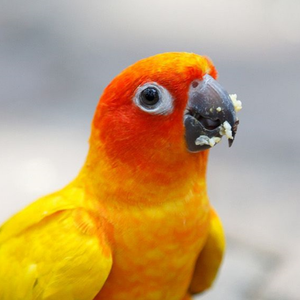ELA 10-1: Final Study Notes
Description

|
Created by Riley Babuik
almost 4 years ago
|
|
Resource summary
Page 1
ELA 10-1: Final Study Notes Short Stories are shorter stories with distinct writing. They have little to no background or details. They focus on being a full story that can be readable in one sitting, with a single plot, single theme and a few characters. (1,000 to 20,000 words) Novellas are longer than short stories but shorter than novels. Novels are much longer, more complicated stories. (30,000 - 40,000 words) Any story needs a good conflict. External Conflict - A struggle outside of the character's control Eg. Villains/ Antagonists Internal Conflict - A struggle within a character Eg. Mental illnesses Types of Conflict: Human vs. Human Human vs. Nature Human vs. Society Human vs. Self General Plot Format: Exposition - When everything is revealed to the readers Rising Action - When the problem starts, the inciting incident happens. The story begins to gain traction and build suspense Climax(peak) - When the mystery is solved, the villain is defeated/ finally encountered Falling Action - When the climax cools down, the story gets less exciting, the villain is defeated/ redeemed Resolution - All of the loose ends are tied, the characters get endings Characters: Protagonist - Main character, understandable, usually someone to support Antagonist - Goes against the protagonist, seemingly "evil", sometimes understandable Dynamic Characters - Characters that change/evolve throughout the story Static Characters - Characters that remain throughout the story Rounded Characters - Complex characters with many sides, meant to resemble real people Flat Characters - Dull characters who are mostly in the background Theme: A central idea or insight about human nature that the author shares with the reader through the story. It is normally subtle and takes some thinking for the reader to identify. It is shown in many ways throughout the story: - Characters will develop and explore the theme along with the reader - The title - Key statements in the story Message: A message is an interesting and thoughtful insight taken from the theme, usually an uncommon/unheard of thought. Morals: A lesson about what is right and wrong, usually shown through the characters learning a lesson from a situation Have a moral/message in a story is not necessary. There are many good stories that feel emotional and satisfying to read just because they explored a theme well.
Page 2
ELA 10-1: Final Study Notes Steps to Annotate(Analyze) a Poem: 1. Initially, read the entire poem. Take notes of any questions you have 2. Underline any words you do not understand, look them up 3. Look for a rhyme scheme, underline any words that rhyme 4. Identify figurative language used in the poem. Why are they used? 5. Identify any sound devices. Why are they used? 6. Identify any repetition, why is it repeated? Is there significance in what is repeated? 7. Are there any words that are impactful or interesting in the poem? 8. Include a brief personal reaction to the poem. Did you enjoy the poem? Was there thought put into it? 9. Identify a theme in the poem 10. Reread the poem several times if you are struggling to find any of these. Read them in a different voice, or even backwards. When finished annotating, you should be able to answer these questions: - What is the theme of this poem? - How is the theme shown to the reader? - What is the tone and mood of the poem? - How is the mood of the poem established? - How does figurative language affect the poem? You can use SOAPST to analyze poetry: Speaker - Who is speaking? Occasion - What is happening? Is this poem based on a real-life event? Audience - Who is this directed towards? What's the demographic of this poem? Purpose - What is the purpose of this poem? Is it informative? Entertaining? Inspiring? Subject - What subject matter does this poem tackle? Tone - What is the tone of this poem? Important Poetry Terms: Stanza: A collection of lines in a poem, similar to a paragraph Assonance: Repetition of vowel sounds Eg. The track is black Cacophony/Dissonance: Harsh or ugly sounds Eg. Screech, bellow Euphony: Soft sounding words Eg. Lullaby, meadow Connotation: The emotional association of a word Eg. A "gang" Denotation: The dictionary meaning of a word Eg. A "gang" is a group of people Couplet: Two lines of poetry that belong together Figurative Expression: When words are used outside of their literal, dictionary definition Eg. A Dare Devil is reckless and fearless, even though that is not what "dare" means Literal Expression: When words are used for their factional definition Eg. The water is hot because it was boiled Metonymy: Calling a word by what it is most associated(similar to a synecdoche) Eg. The Flames won the game Parody: Making fun of another piece of literature/ media Eg. Weird Al Yankovic Rhythm: A pattern of stressed and unstressed syllables Onomatopoeia: When a word resembles the sound it makes Eg. The tiger roared Blank Verse: A poem that has rhythm but doesn't rhyme Rhyme Scheme: A pattern of words that rhyme, usually on the last word of the line Foot: A combination of stressed and unstressed syllables, not necessarily in a rhythm Free Verse: A poem that doesn't rhyme or have rhythm Poetic License: This allows the writer to use whatever words and punctuation they want Internal Rhyme: When there is a rhyme within a line Eg. ‘Once upon a midnight dreary, while i pondered, weak and weary.’
Page 3
Want to create your own Notes for free with GoConqr? Learn more.
